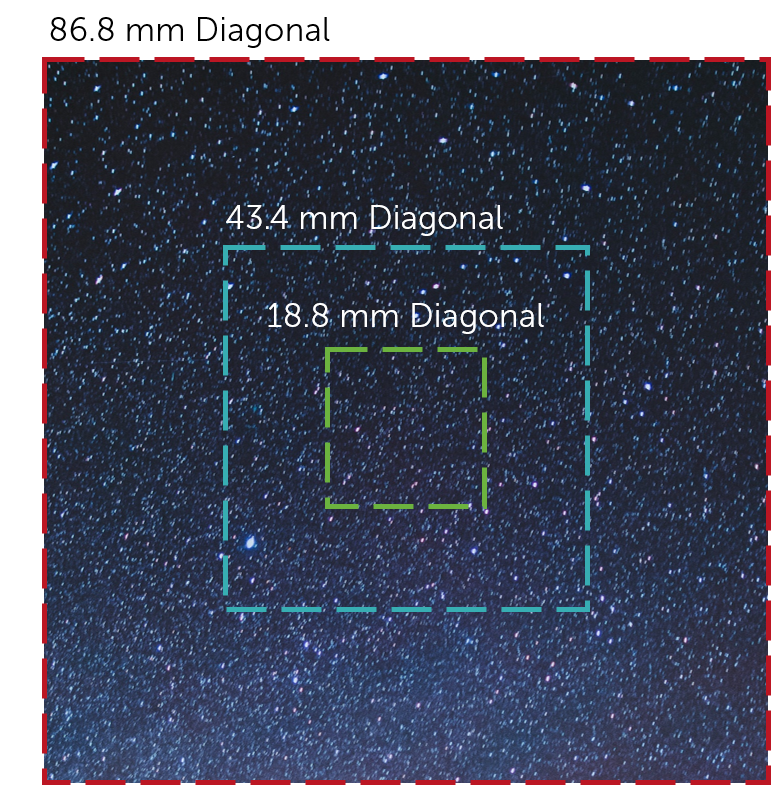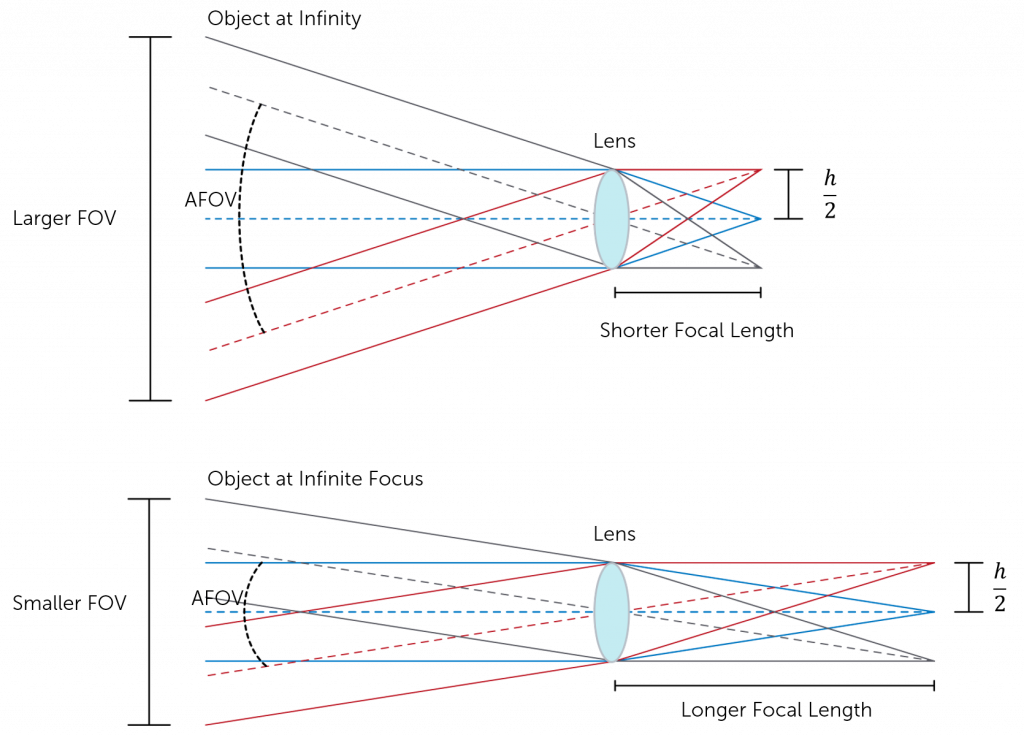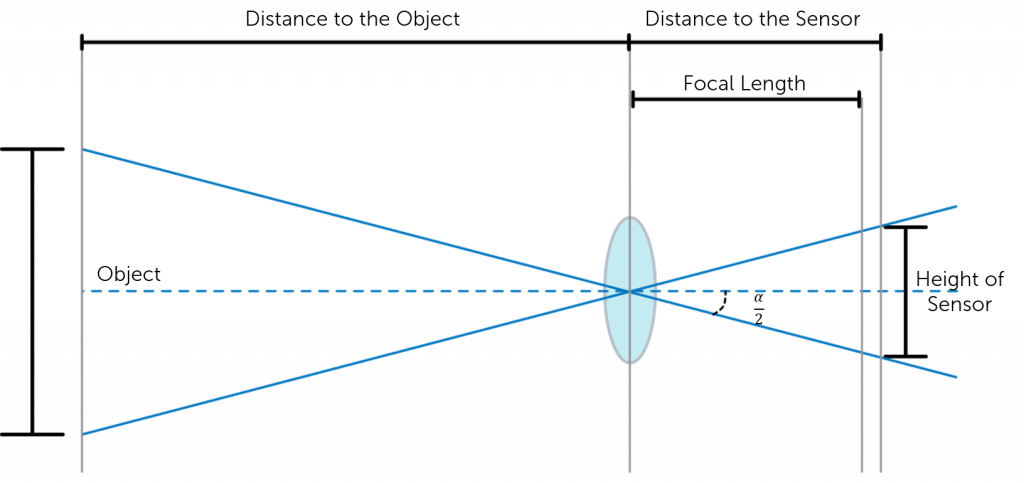How To Calculate Camera Field Of View
Introduction
Field of view (FOV) is the maximum area of a sample that a camera tin can image. It is related to two things, the focal length of the lens and the sensor size . Effigy 1 shows a comparison between the field of view and the size of the sensor. Assuming that the focal length of the lens is the same, the larger the sensor the larger the field of view.

The sensor size is determined by both the number of pixels on the sensor, and the size of the pixels . Different sized pixels are used for different applications, with larger pixels used for higher sensitivity, and smaller pixels used for college spatial resolution (find out more on Pixel Size and Camera Resolution ).
The focal length of the lens describes the distance between the lens and the focused image on the sensor. As light passes through the lens information technology will either converge (positive focal length) or diverge (negative focal length), however within cameras the focal length is predominately positive. Shorter focal lengths converge the light more strongly (i.eastward. at a sharper bending) to focus the subject field being imaged. Longer focal lengths, in comparing, converge the light less strongly (i.e. at a shallower angle) in order to focus the epitome.
This means that the distance of the focal length is determined by how strongly the light is converged by the lens in order to focus the field of study existence imaged. This, in turn, influences the angle from the horizonal of light that can be captured by the lens. This is known every bit the athwart field of view (AFOV) and is required to determine the overall FOV. The AFOV is the angle betwixt whatsoever light captured at the horizonal , and any light captured at the edge (as shown in Figure 2). If yous have a fixed sensor size, altering the focal length will change the AFOV and therefore the overall FOV. A shorter focal length provides a larger AFOV view, and therefore a larger FOV. The same is true but vice versa for longer focal lengths, as indicated in Figure ii.

Calculating AFOV
When calculating AFOV a few assumptions demand to exist made:
- That the object being imaged completely fills the camera sensor
- That the lens is at infinity focus (i.e. when an paradigm is formed from an object at infinity away)
- The lens is a pinhole

Figure 3 shows a simplified version of how these assumptions permit for AFOV calculation. By using trigonometry , the AFOV tin can be expressed as:
where h is the horizontal dimension of the sensor and F is the focal length of the camera lens.
Measuring FOV
To measure the FOV of UV, visible and infrared cameras, optical tests are ordinarily used. During the exam, lite is focused from a black body (an object that absorbs all low-cal that falls on information technology) onto a examination target at the focal identify. Past using a set of mirrors, a virtual paradigm can be created that is at an infinitely far distance.
This allows the FOV dimensions (i.e. vertical and horizontal distances) to be measured without knowing lens focal length or sensor size. The paradigm created, including the target, is then displayed on a monitor, with the target image being a subset of the total image brandish. This allows the FOV to be approximated equally:
Where D is the full display image dimensions (either horizontal or vertical), and d is the target dimensions (either horizontal or vertical).
Summary
Field of view defines the maximum area of a sample that a camera tin can image, adamant past the focal length of the lens and the sensor size.
Sensor size is determined by both the size of the pixels and number of pixels on the sensor. This can exist optimized for each application, with larger sensors optimal for sensitivity express applications, and smaller sensors optimal for resolution express applications.
The focal length of a lens converges light so that the image of an object is focused onto the sensor. This determines the angular field of view, a parameter of the overall field of view. This is defined every bit the bending between any light captured at the horizontal and any calorie-free captured at the edge of the of the object. All of these parameters play a role in determining the FOV of a camera and tin exist measured using either trigonometry and the angular field of view, or via an optical test, in which a black torso is utilized to create a virtual image
Source: https://www.princetoninstruments.com/learn/camera-fundamentals/field-of-view-and-angular-field-of-view
Posted by: brucesiderear.blogspot.com

0 Response to "How To Calculate Camera Field Of View"
Post a Comment